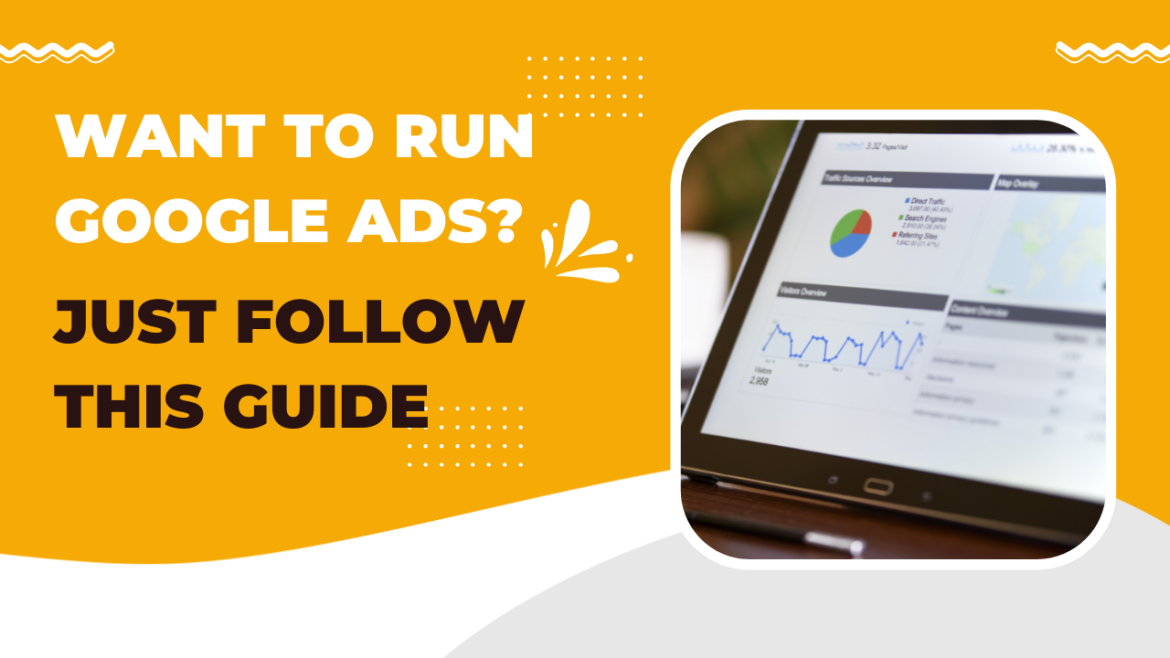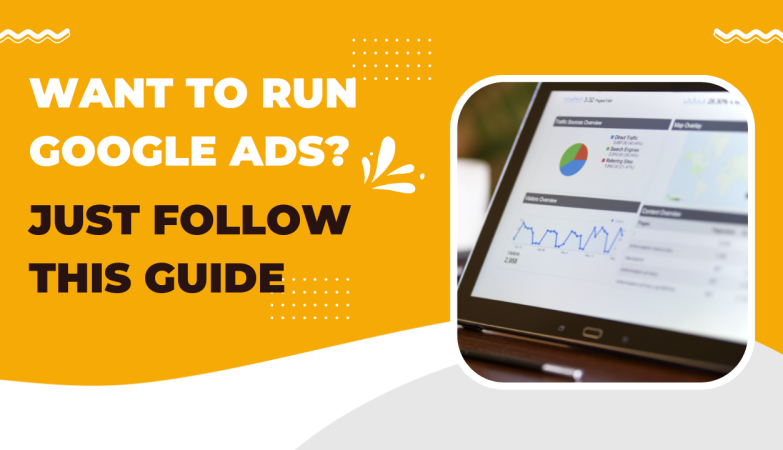If you’re new to Google Ads, this guide is for you! We’ll walk you through the basics of creating your first ad campaign, from setting your budget to targeting your audience.
1. Choose your goal
The first step in creating a Google Ads campaign is to decide what you want to achieve. Do you want to drive more traffic to your website? Increase sales? Get more leads? Knowing your goal will help you determine which type of ad campaign to create.
There are many reasons you might choose to use Google Ads, the most common of which is to drive traffic to your website. But you might also want to use Google Ads to increase sales of a product, get more leads for your business, or even just raise awareness of your brand.
No matter what your goal is, though, it’s important to make sure that your ads are effective in reaching that goal. So before you create any ads, take some time to figure out what you want them to achieve.
Once you know your goal, it’s time to start creating your ad campaign. The first step is to come up with a catchy headline for your ad. This should be something that will grab people’s attention and make them want to learn more about what you have to offer.
Then, you’ll need to come up with a description of your product or service that will convince people to click on your ad. Be sure to focus on the benefits that people will get from using your product or service, and make sure that your text is easy to read.
Finally, you’ll need to choose the keywords that you want your ad to show up for. These should be words and phrases that are related to the goal of your campaign, and that people are likely to search for online.
Once you’ve created your ad, it’s time to start tracking its performance. Use the Google Ads dashboard to track how many clicks your ad receives, how much money it costs per click, and how many conversions it generates.
2. Set your budget
How much money are you willing to spend on advertising? Google Ads allows you to set a daily budget or choose “lifetime spending.” You can also choose how you’d like your ads to be billed: per click, per impression, or per day.
When you’re setting your budget for Google Ads, it’s important to keep in mind the different types of campaigns you can run and how much each one costs.
With search ads, you’re charged based on the number of times your ad is clicked on. The cost-per-click (CPC) for your ad will be determined by a few factors, including the quality and relevance of your ad, as well as the competition for the keywords you’re targeting.
For display ads, you’re charged based on how many people see your ad, even if they don’t click on it. This is called Cost-per-thousand impressions (CPM).
Since display ads are shown to more people, they can be a great way to reach a larger audience relatively inexpensively. However, because you’re not charged per click, it’s important to make sure your ad is interesting and relevant to potential customers, so they’ll want to click through.
With remarketing, you’re charged based on the number of people who see your ad and then take an action, such as visiting your website or completing a purchase. This is called Cost-per-acquisition (CPA), and it’s a great way to reach people who have already shown an interest in what you’re selling.
When setting your budget for Google Ads, it’s important to think about what type of campaign you want to run and how much each click or impression costs. By understanding the different pricing models, you can create a campaign that fits within your budget and meets your business goals.
3. Target your audience
Google Ads lets you target people based on their interests, demographics, and location. You can even target people who have visited your website in the past. This ensures that your ads are shown only to people who are most likely to be interested in them.
There is a lot of discussion in the marketing world about whether or not to target your audience in Google Ads. Some people believe that it’s a waste of money to target people who are already interested in what you have to offer, while others believe that it’s the only way to make sure your ads are seen by the right people.
There is no right or wrong answer when it comes to this debate; it all depends on your business and your customers. However, there are some pros and cons to targeting your audience in Google Ads that you should consider before making a decision.
The Pros of Targeting Your Audience in Google Ads
1. You’ll Reach More People:
When you target your audience in Google Ads, you’re ensuring that your ads are being shown to people who are already interested in what you have to offer. This means that you’ll reach more people than if you were to show your ads to everyone who is searching for keywords related to your business.
2. You’ll Get More Conversions:
Studies have shown that people who are targeted in Google Ads are more likely to convert than those who aren’t. This is because they’re already interested in what you have to offer and they’re more likely to be ready to buy something from you.
3. You’ll Save Money:
Targeting your audience can actually save you money on your advertising costs. Since you’re reaching more qualified leads, you won’t have to spend as much money on clicks or impressions.
The Cons of Targeting Your Audience
1. You May Reach the Wrong People:
Although targeting your audience will ensure that your ads are being shown to people who are interested in what you have to offer, it also means that you may miss out on potential customers who aren’t interested in what you do.
2. You May Not Reach Enough People:
Although targeting your audience will help you reach more qualified leads, it may not be enough to reach all of the people who are interested in what you do. If you want to reach as many potential customers as possible, then targeting your audience may not be the best option for you.
4. Create your ad
Now it’s time to create your ad! You’ll need to choose a headline, description, and website URL. You can also choose a call-to-action button, such as “Learn More” or “Buy Now.” Be sure to test different combinations of these elements to find the ones that work best for your campaign.
Why should someone choose your blog?
There are a number of reasons why someone might want to read your blog. Perhaps you offer unique and insightful commentary on current events, or maybe you share helpful tips and advice on a wide range of topics. Whatever the case may be, by choosing to advertise your blog on Google, you can reach out to a new audience of potential readers and help grow your blog’s popularity.
Google Ads is an effective way to promote your blog because it allows you to target specific keywords that people are likely to use when searching for information online. This means that you can target potential readers who are already interested in the topics that your blog covers. What’s more, Google Ads also allows you to track how many people have clicked on your ad and visited your blog. This helps you to gauge the effectiveness of your advertising campaign and make necessary adjustments to ensure that you’re reaching the right audience.
If you’re looking for an effective way to promote your blog, consider advertising with Google Ads. By targeting relevant keywords and tracking click-through rates, you can ensure that your ads reach the right audience and help grow your blog’s popularity.
5. Measure your results
Once your campaign is up and running, it’s important to track its performance so you can gauge its success. Google Ads provides detailed reports that let you see how many people saw your ad, how many clicked on it, and how much money you spent on it. Use this information to make changes and improve your results.
When you’re setting up your Google AdWords account, you’ll want to track how well your ads are doing. Measuring the results of your ads can help you determine whether or not they’re effective, and make necessary adjustments so that you can continue to improve their performance.
There are a few different ways to measure the results of your Google Ads campaigns:
1. Clickthrough rate (CTR)
The clickthrough rate is the percentage of people who saw your ad and then clicked on it. This is a good indicator of how interested people are in what you’re selling. You can use CTR to measure the effectiveness of different ads, as well as the effectiveness of different keywords.
2. Conversion rate
The conversion rate is the percentage of people who clicked on your ad and then completed your desired action, such as making a purchase or signing up for a newsletter. This tells you how effective your ad is at turning clicks into customers. You can use conversion rate data to determine which ads are most effective at getting people to take the actions you want them to take.
3. Cost-per-click (CPC)
The cost-per-click is the average amount you’re paying each time someone clicks on your ad. This tells you how much it costs to get someone to click through to your site. You can use CPC data to determine which keywords are most effective (and therefore most expensive) and adjust your bids accordingly.






